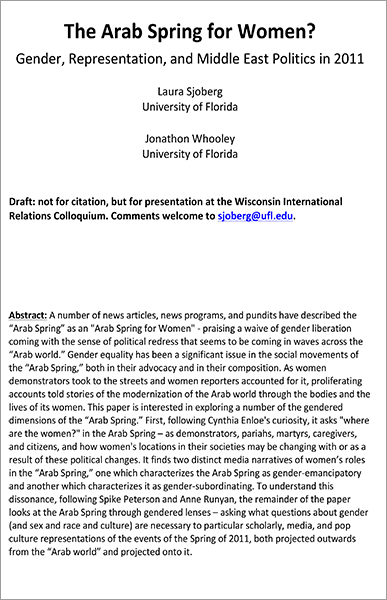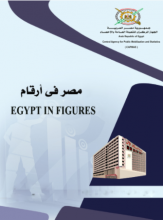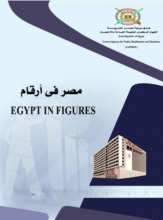Gender

A number of news articles, news programs, and pundits have described the “Arab Spring” as an "Arab Spring for Women" -¬ praising a waive of gender liberation coming with the sense of political redress that seems to be coming in waves across the “Arab world.” Gender equality has been a significant issue in the social movements of the “Arab Spring,” both in their advocacy and in their composition. As women demonstrators took to the streets and women reporters accounted for it, proliferating accounts told stories of the modernization of the Arab world through the bodies and the lives of its women. This paper is interested in exploring a number of the gendered dimensions of the “Arab Spring.” First, following Cynthia Enloe's curiosity, it asks "where are the women?" in the Arab Spring – as demonstrators, pariahs, martyrs, caregivers, and citizens, and how women's locations in their societies may be changing with or as a result of these political changes. It finds two distinct media narratives of women’s roles in the “Arab Spring,” one which characterizes the Arab Spring as gender ¬‐ emancipatory and another which characterizes it as gender - ¬subordinating. To understand this dissonance, following Spike Peterson and Anne Runyan, the remainder of the paper looks at the Arab Spring through gendered lenses - asking what questions about gender (and sex and race and culture) are necessary to particular scholarly, media, and pop culture representations of the events of the Spring of 2011, both projected outwards from the “Arab world” and projected onto.
Related Topics
-
Egypt in Figures - Population 2022
2022"Egypt in Figures" is a booklet issued each year by the Central Agency for Public Mobilization and Statistics (CAPMAS). It contains the most...Read More -
Egypt in Figures - Education 2022
2022"Egypt in Figures" is a booklet issued each year by the Central Agency for Public Mobilization and Statistics (CAPMAS). It contains the most...Read More -
Egypt in Figures - Economy 2022
2022"Egypt in Figures" is a booklet issued each year by the Central Agency for Public Mobilization and Statistics (CAPMAS). It contains the most...Read More


